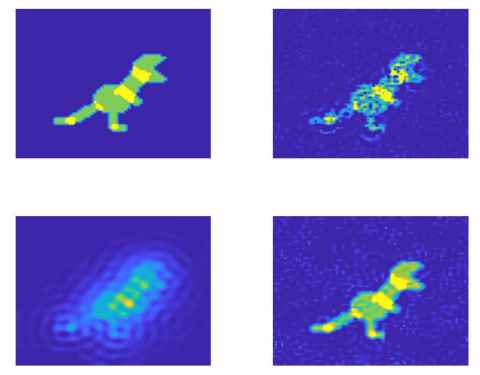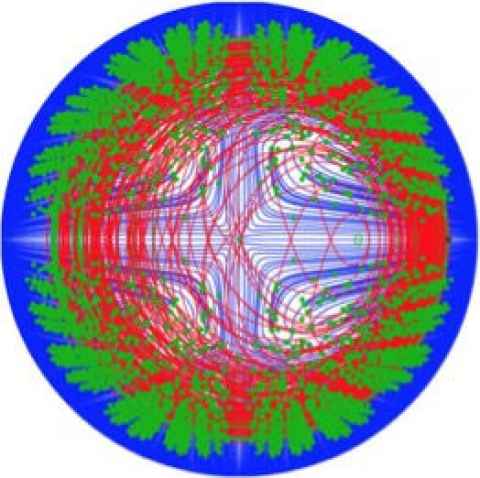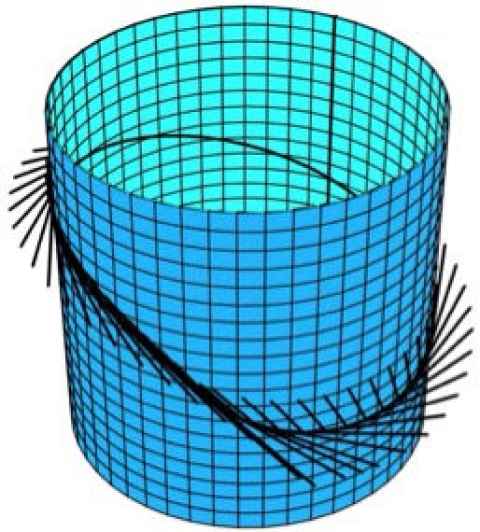Mathematics
Applications for 2025-2026 open on 1 July 2025
Synchronisation in networks of coupled oscillators
Project code: SCI083
Supervisor(s):
Discipline(s): Department of Mathematics
Project
Many real-world systems can be described as networks of coupled oscillators, such as neurons in the brain, the dynamics of power grids, and the flashing of fireflies. Common to all these systems is spontaneous synchronisation, such that an ordered synchronised state emerges from a disordered state. What is different among coupled oscillator systems is how the synchronised state is reached.
The role
In this project you will explore synchronisation phenomena through a combination of mathematical analysis and numerical simulation.
Contagions on complex networks
Project code: SCI084
Supervisor(s):
Discipline(s): Department of Mathematics
Project
We are all very familiar with contagions. As well as disease spread, contagions describe many other spreading processes, such as the spread of information/disinformation. Simple contagion models, such as the SIR-model, assume a well-mixed population.
The role
In this project you will break that assumption, and study contagion models on complex networks, where network nodes are individuals, and network edges are interactions. This project will combine mathematical analysis and numerical simulation to study the role of network structure on contagion dynamics.
Locating the Jurassic Park island from the dinosaurs' roars
Project code: SCI085
Supervisor(s):
Discipline(s): Department of Mathematics

Project
The aim is to locate the source of some sound, here we imagine to locate an island from the noise of its inhabitants. Typically, microphones are located randomly in the ocean surrounding the island to measure the roars.
This is called an inverse source problem and it requires to invert a non-invertible (not even square) matrix to reconstruct a large dimensional image from only few measurements data (microphones).
Pre-requisites
MATHS 260, MATHS 270, possibly MATHS 361, 362 or 363
Higher order interactions in ecological modelling
Project code: SCI086
Supervisor(s):
Discipline(s): Department of Mathematics
Project
Interactions between species, such as predator-prey or competition, are often modelled using simple Lotka-Volterra type differential equations. Such models are an idealisation, and ecologists are interested in the effect of higher-order interactions.
The role
This project will use dynamical systems methods to investigate and classify the qualitative effects on the dynamics of higher-order interactions in two- and three-species models.
Prerequisites
Maths 260, and at least some programming experience.
From networks in physical space to networks in phase space
Project code: SCI087
Supervisor(s):
Discipline(s): Department of Mathematics
Project
Networks of coupled oscillators arise in a wide range of physical applications, and the dynamics of the system is constrained at least in part by the connectivity and topology of the network.
The role
This project will investigate how the topology of the physical network affects the existence of objects called heteroclinic networks in the resulting phase space.
Prerequisites
Maths 260, and at least some programming experience.
Stories of learning mathematics
Project code: SCI088
Supervisor(s):
Discipline(s): Department of Mathematics
Project
Everyone has a story about learning mathematics. Many of these are happy stories. But some are not. For some people, mathematics is so tinged with distress and confusion that they opt out of the subject as soon as they can, avoiding it into adulthood, often at personal cost.
The role
This project explores how stories might be used to invite mathematics-averse adults to reconnect with the subject. It will involve searching and reviewing research literature, and analysing data.
Ideal student
Experience in MATHS 302 is useful.
Translation Surfaces
Project code: SCI089
Supervisor(s):
Discipline(s): Department of Mathematics
Project
Translation surfaces are formed by glueing polygons along their edges, ensuring that the glued edges are translated copies of each other. Alternatively, they can be defined using mathematical concepts like holomorphic differentials on Riemann surfaces, or flat metrics on surfaces with prescribed singularities.
These equivalent perspectives give rise to a rich theory that combines several branches of mathematics, including topology and complex analysis.
The role
The goal of this project is to learn about translation surfaces and explore some of their properties.
Minimal bivariate identities for matrices
Project code: SCI090
Supervisor(s):
Discipline(s): Department of Mathematics
Project
Given n, what is the smallest degree of a polynomial identity valid for all pairs of n×n matrices? This is a problem in noncommutative ring theory.
The role
The aim is to investigate the structure of identities, and use it to simplify the search for minimal ones. The desired outcome is answering the starting question for small n.
Prerequisites
Maths320, enthusiasm about advanced linear algebra, and willingness implement algorithms with a symbolic computation software (like Mathematica, Maple or Magma).
Finite groups with geodetic Cayley graphs
Project code: SCI091
Supervisor(s):
Discipline(s): Department of Mathematics
Project
An undirected graph is geodetic if every pair of vertices has a unique path of shortest length between them. There is a conjecture that the only finite geodetic Cayley graphs are odd cycles and complete graphs.
The role
The goal of this project is to explore this conjecture, either theoretically or through computations.
Fingerprints of Wild Chaos
Project code: SCI092
Supervisor(s):
Discipline(s): Department of Mathematics

Project
Wild chaos is a new form of unpredictable behaviour that can occur in higher-dimensional dynamical systems. Only very few examples are known, but a previous summer project student discovered a measure of wild chaos that can identify such behaviour in experiments.
The role
Your task will be to test the approach on data that is thought to come from a wild chaotic attractor in a three-dimensional discrete dynamical system, defined by a map. If it works, what happens as parameters change and wild chaos is lost?
Prerequisites
Maths 260 and good Matlab or Python coding skills.
Computing an invariant torus with Chebfun
Project code: SCI093
Supervisor(s):
Discipline(s): Department of Mathematics

Project
Chebfun is an extension to Matlab that allows for arithmetic operations on functions, performed to machine precision, using Chebyshev polynomials. Recent updates include periodic function approximations.
The role
Your task will be to develop a new application of Chebfun for the computation of an invariant closed curve, or torus, in a two-dimensional discrete dynamical system, defined by a map. In two dimensions, the torus will be either attracting or repelling.
Are you up for the challenge of doing it for a three-dimensional system when the torus can be of saddle type?
Prerequisites
Maths 162, Maths 250, and good Matlab coding skills
Pursuit-evasion games on graphs
Project code: SCI094
Supervisor(s):
Discipline(s): Department of Mathematics
Project
Pursuit–evasion games are a family of two player games in mathematics and computer science in which one player attempts to track down or capture another player in an environment. There are countless variants of these games, depending on the environment, the precise rules of how players move, the information available to each player, and various other parameters.
The role
In this project, you will study pursuit evasion games that take place on a graph, and in particular the effect of random moves on the game.
Ideal student
The project is suitable for students who have enjoyed an introduction to combinatorics (e.g. COMPSCI225), some background in probability theory and programming skills will be an asset.
Tipping points in dynamical systems
Project code: SCI095
Supervisor(s):
Discipline(s): Department of Mathematics
Project
Tipping points in dynamical systems are rapid transitions between two distinct states. In a physical sense, one might think of ecosystem collapse, or rapid changes in climate systems. In a mathematical sense, tipping points can be driven by noise, or bifurcations. Depending on the type of tipping point, there are different warning signals which will occur prior to the tipping point, which may be useful for managing these systems. (Most interest to date has been in applications to climate or ecology.)
The role
This project will focus either on tipping points in spatial systems, or application of tipping points to physiological systems (asthma in particular), depending on the interests of the student.
Ideal students
Interested students should have at least some background in differential equations and bifurcations (maths 260 or similar) and numerical methods (maths 162, 270 or similar).
Equation discovery from data
Project code: SCI096
Supervisor(s):
Discipline(s): Department of Mathematics
Project
Suppose that, from some observable dynamical system, we have only a set of observations of this system at discrete times. The problem of equation discovery is: can we reconstruct, from these observations alone, the dynamical system which governs the underlying behaviour of this system?
The role
Importantly, we want not just to predict the future time course beyond the observations (i.e. in a black-box fashion) but to gain understanding of the underlying system; in the case of a system of differential equations, can we reconstruct the underlying equations themselves given only the observations?